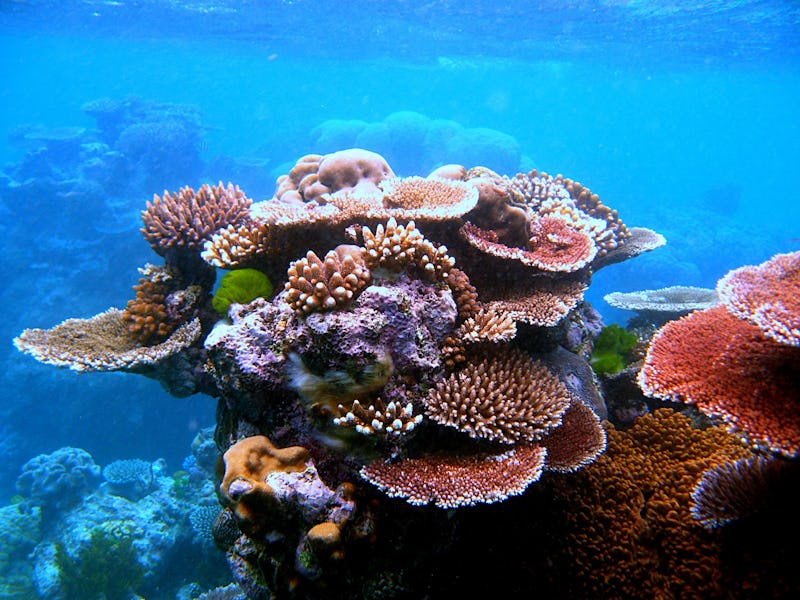Is Coral a Plant or Animal? A Partnership Builds Undersea Cities
Symbiotic relationships are pretty neat.

The Netflix documentary Chasing Coral documents in spectacular fashion the world of coral reefs, a world that is in grave danger from climate change and other threats.
Reefs are enormous physical structures made from the calcium carbonate skeletons of animals, built up over thousands of years. They’re also home to a quarter of the diversity of this planet’s oceans. The reef builders in chief are coral, an ancient organism with extraordinary powers.
For as plant-like as they might seem, coral are actually animals, marine invertebrates related to sea anemones and jellyfish. They evolved more than 500 million years ago in the Cambrian explosion, a time of rapid evolution and diversification of multicellular organisms on Earth.
But you can’t be blamed for probably thinking coral were plants. The language of coral can be sometimes confusing, because the word “coral” can mean one of two things. A coral can describe a particular species of animal that belongs to the coral family, or it can describe an undersea colony that is made of many coral animals but that counts plant species as important members, too. If you’re talking about the former, coral is an animal, period. If you’re talking about the later, a coral is a colony of coral animals that live in a symbiotic relationship with a kind of photosynthesizing algae called zooxanthellae; it is both plant and animal, and you can’t have one without the other.
This shows the polyps of a 'Montastrea cavernosa' star coral in detail.
Here’s how it works.
A single coral animal is a polyp. These are usually tiny and look like a soft, round mouth with tentacles. But polyps don’t always act alone. Many species of coral grow in colonies, with hundreds or thousands of polyps acting as a single organism. They work together to build a hard skeleton that grows over time as the colony multiplies. If you look closely at a stony coral, you’ll see that it is covered in tiny fleshy bumps — these are the polyps that make up the whole.
This is how a single coral can, at least theoretically, live forever. Individual polyps will die but the colony will go on growing indefinitely provided that the environmental conditions continue to support its survival. Coral have been found that are more than 4,000 years old.
Coral can reproduce both asexually and sexually. An individual polyp can divide into two clones of itself, which typically expands the existing colony but can also begin a new one. Most polyps are also either male or female, and occasionally spew out sperm or eggs into the water. If mating gametes find each other, the resulting larvae can spread far into the ocean and begin colonies of their own.
Coral feed themselves mostly with sunshine (which also gives their characteristic vibrant color). But they are not plants, and cannot photosynthesize by themselves. So they invite in single-celled zooxanthellae, which lives within their tissue and does the work for them. The algae gets a safe place to live; the coral gets to eat.
Many coral are also predatory, hunting at night using long, stinging tentacles to snag tiny marine creatures called zooplankton.
When the water gets too warm, coral lose their zooxanthellae and turn white.
Zooplankton are good for a snack, but coral need zooxanthellae to live. In water that’s too warm, zooxanthellae start excreting toxins and are evicted by their coral hosts in a process called bleaching. The polyps turn transparent and the coral turns bright white, their skeleton plainly visible through the flesh. If the water cools within a few weeks, the zooxanthellae will return. If not, the polyps will starve and that coral will be dead forever.
If coral cannot grow, reefs will not be maintained and marine creatures of all stripes will lose their home. The loss of coral ripples all the way up the food chain, including to humans, who eat fish that depend on reef ecosystems for survival.
Coral have survived a lot in the last 500 million years, and they’ll probably survive climate change in some form, too. In the long term recovery is likely, but over the coming decades the picture is bleak. Ninety percent of reefs or more could be gone by 2050, which spells catastrophe for all of the humans and animals that depend on coral reefs to live.